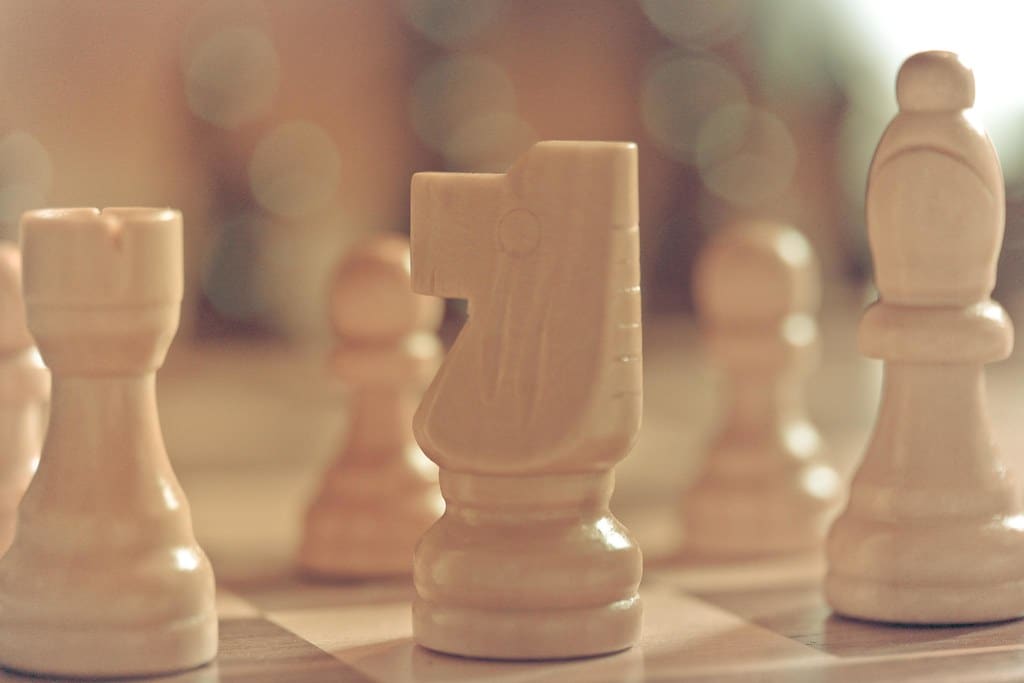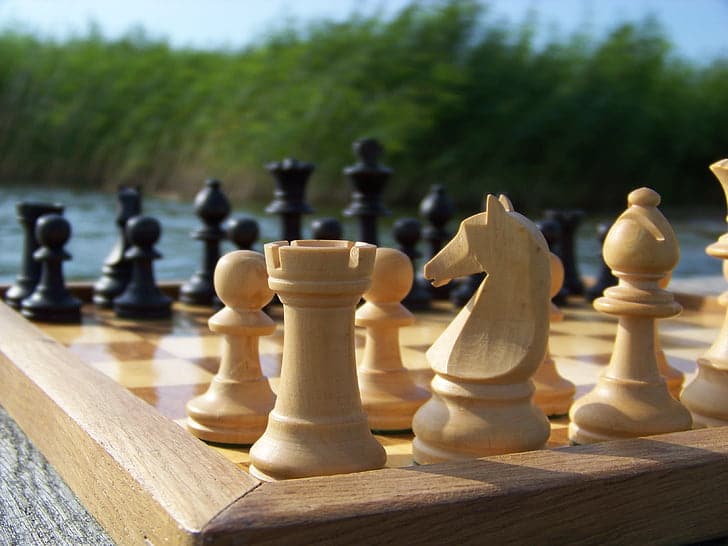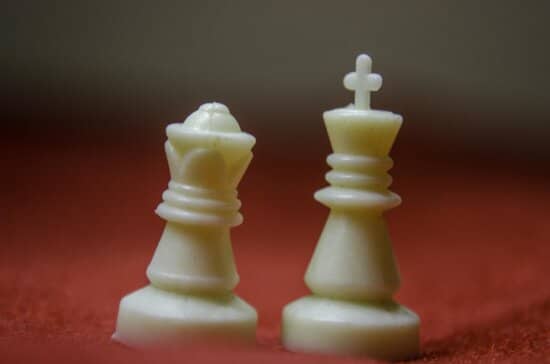Chess is an incredibly popular and ancient game that is easy to learn but difficult to master! This article will give you the basics needed to understand the game and get started playing. We will cover the rules, game pieces, and strategies. With this information, you will learn in how to play chess for beginners.
Table of Contents
How to play chess for beginners
The first step in how to play chess for beginners is in the board. A chess board is an 8×8 grid of alternating light and dark squares. Each player has 16 pieces, all of different values. There are 8 pawns, 2 knights, 2 bishops, 2 rooks, 1 queen, and 1 king.
The next step is to understand the rules. Each piece moves differently, and the objective is to checkmate the opponent's king. This is done by putting pressure on the king, forcing it to a square where it can be attacked with no escape. To win, a player must move their pieces strategically to create advantageous positions.
Finally, understanding strategies is essential. Players must think strategically to create advantageous positions and make the best moves. This includes evaluating the opponent's pieces and anticipating potential moves. With practice and study, you can develop your strategy and become a better player.
How to play chess for Beginners
Chess is an ancient game of strategy and skill. It is a two-player game, each player taking turn to move their pieces across the board. The goal is to checkmate the other player’s king.
The game begins with 16 pieces for each player arranged in two rows. The pieces consist of the King, Queen, two Rooks, two Knights, two Bishops and eight Pawns.
The game of chess is played on an 8×8 board. The board is divided into 64 alternating light and dark squares. The squares are labeled a-h horizontally, and 1-8 vertically.
The player with the white pieces always moves first. The players take turns to move one piece at a time. Each piece moves differently, for instance the pawn can only move forward one square at a time, while the knight can move in an L-shape.
Capturing pieces happen when one piece moves to a square occupied by the opponent’s piece. The opponent’s piece is removed from the board.
Check occurs when a player moves their piece to threaten the opponent’s king. The opponent must make a move or capture the attacking piece. Checkmate is when a player’s king is in check and cannot move or capture the attacking piece.

Chess is a great game that can be played casually or competitively. It’s a great way to exercise your brain and develop your strategic thinking.
What are the basic rules of chess?
Chess is an ancient board game played by two opponents on a checkered board. The goal of the game is to capture the opponent's king. The basic rules of chess are as follows:
- Each player starts with 16 pieces: one king, one queen, two rooks, two bishops, two knights, and eight pawns.
- The pieces move in different ways, depending on their type.
- The game is won when the opponent's king is checkmated.
- A draw is declared when the game is not won and no more pieces can be captured.
- A player must make a move within a certain amount of time.
- The game can also be won by sacrificing all one's pieces, or by stalemate.
It is important to note that all pieces except the knight can only move in a straight line. The knight is the only piece that can jump over other pieces. Additionally, the pawn can only capture pieces diagonally in front of it.

How do you play chess for beginners?
Chess is one of the oldest and most popular board games in the world. It's a two-player game that requires strategy and careful thought. To get started, you'll need to know the basic moves and rules. It's important to remember that each piece moves differently.
The pieces are: King, Queen, Rook, Bishop, Knight, and Pawn. To begin the game, each player places all of their pieces in the starting position on their respective sides of the board. Then, players alternate turns, moving one piece at a time. The objective is to checkmate the opponent's King.
A few important rules to remember: Pawns can only move forward, but they can capture pieces diagonally; the Rook can move in any direction, but only along straight lines; the Bishop can move diagonally and can jump over pieces; the Queen can move in any direction and can move any number of squares; and the King can move one square in any direction, but must not move into check.
Once you know the basics, practice playing against friends or family members. You can also use online tools to practice and improve your skills. There are many resources available to help you learn how to play chess for beginners. Good luck!
What are the 5 important rules in chess?
Chess is a classic game of strategy and skill. Knowing the rules of the game is important if you want to play the game correctly. Here are 5 important rules in chess that every player should know:
- The King: The King is the most important piece on the board and must be protected at all costs. If the King is captured, the game is over.
- The Pawn: The Pawn is the weakest piece and can only move forward one square at a time. Pawns can be promoted to any other piece when they reach the opposite side of the board.
- The Queen: The Queen is the most powerful piece on the board and can move in any direction, as far as it wants. She can be used to attack and defend.
- Castling: Castling is a special move that allows the King and Rook to move simultaneously. This move is used to protect the King and to control the center of the board.
- Checkmate: Checkmate is the goal of the game. It is when the King is in a position where it cannot move without being captured. When checkmate is achieved, the game is over.
Learning the rules of chess is an important part of playing the game in How to play chess for beginners. With these 5 rules in mind, you'll be ready to start playing and enjoying the game of chess.
How to play chess for beginners step by step?
Chess is one of the oldest and most popular board games in the world. It is a two-player game that requires strategy and skill to play. Here are the steps for playing chess:
- Understand the board and pieces.
- Set up the board.
- Learn the basic rules.
- Understand the game’s objective.
- Start the game.
- Learn the special moves.
First, understand the board and pieces. The chess board is an 8×8 grid with alternating dark and light squares. Each player has 16 pieces: 8 pawns, 2 knights, 2 bishops, 2 rooks, 1 queen, and 1 king.
Next, set up the board. Place the board between the two players and put the pieces on the board in their starting positions. The two white pieces should be placed on the right side of each player, and the two black pieces should be placed on the left side of each player.
Third, learn the basic rules. When it is your turn, move one piece on the board. You cannot move two pieces at once, and you can only move your pieces, not your opponent’s. When you move a piece, you can either capture an opponent’s piece or move to an empty square.
Fourth, understand the game’s objective. The objective of the game is to checkmate your opponent’s king. This means that your opponent’s king is in a position where it cannot move without being captured the next turn.
Fifth, start the game. You can decide who goes first, or you can use a coin toss. Players alternate turns until the game ends.
Lastly, learn the special moves. There are several special moves in chess, such as castling, en passant, and promotion. Learning these moves can give you an advantage over your opponent.
With a bit of practice, chess can be a fun and rewarding game.
Playing chess can help you develop strategic thinking, memory, and problem solving skills. It is a great way to challenge yourself and have fun with friends and family.
To begin playing chess, you need to know the rules and moves of the game. You should also familiarize yourself with the board and pieces. Make sure to practice playing and analyze your games to improve your skills.
You can practice playing against a computer, an online opponent, or a real-life friend. Online chess websites are a great place to find opponents and learn from other players.
Finally, have fun with the game! Enjoy the challenge and remember to stay patient and positive.
If you liked this post about how to play chess for beginners should read about Rated chess.






